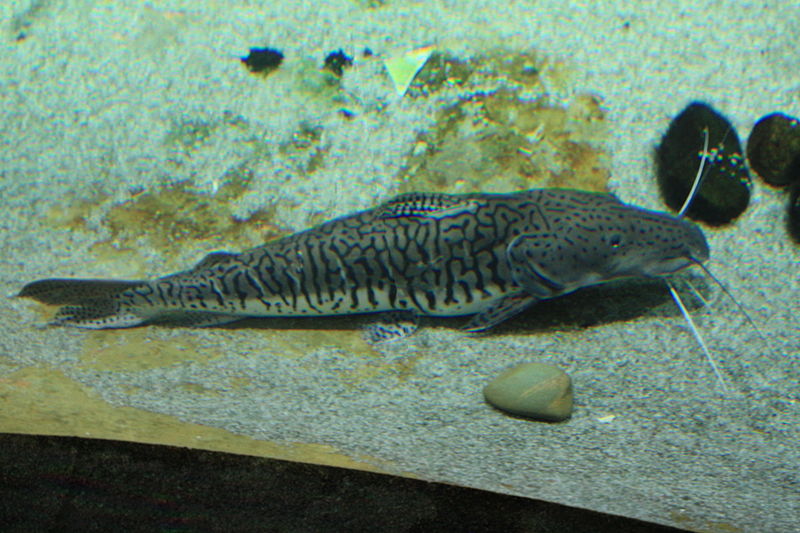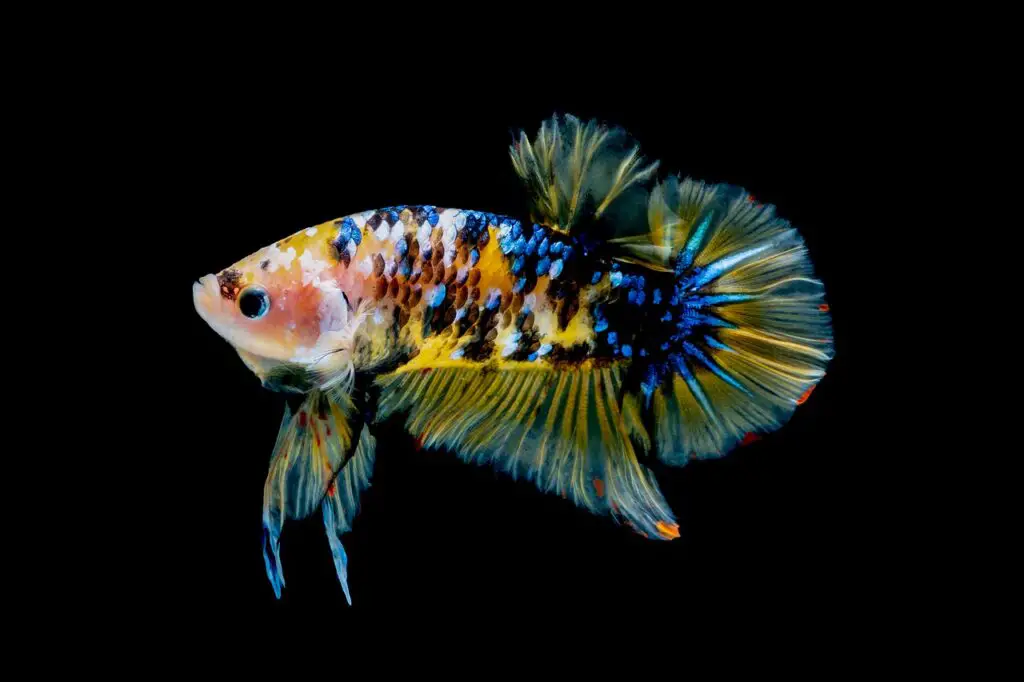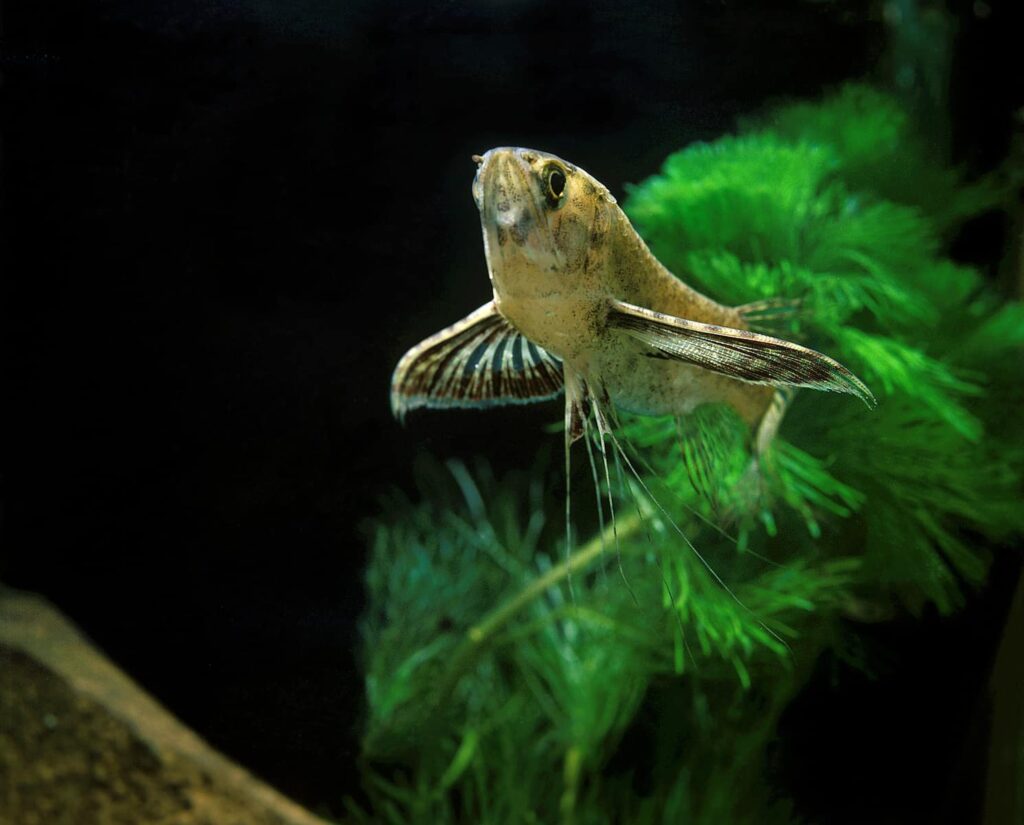Columbian shark catfish are, as their names suggest – actually catfish – but there is still plenty of confusion over whether they are related to sharks! It’s a mistake that’s easily made. Found mainly off the Columbian coast, these interesting fish are often referred to by other names, too – including Jordan’s catfish, tete sea catfish, white catfish, blackfish sharks and Christian catfish.
Regardless of what you choose to call them, these catfish are popular tank species. They are a brackish or marine species of fish, meaning they will normally fare well in tank environments where there is a midpoint between saltwater and freshwater. In the wild, you’ll normally find them swimming around in the Pacific Ocean, where many people may find them amongst sharks – and therefore make the common mistake of labelling them a different species!
Columbian shark catfish can be challenging to look after, and what’s more, they can grow to be quite large. As carnivores, you will also need to make sure that these catfish receive plenty of live meat to enjoy in their tanks. If you’re still scratching your head over the differences between catfish and sharks, however, do keep reading – and we will break it all down for you.
What is the difference between catfish and sharks?
Catfish and sharks are two different species – and what’s more, catfish are usually omnivores whereas sharks are devoted carnivores. The Columbian shark catfish is a little different in this regard, as it is a meat-eater through and through. That, of course, is just one reason why there is so much confusion over their differences!
Both species have visible strong teeth – catfish teeth are sharp, fine and pointed, forming a collective ridge similar to a short bristle sweeping brush! Sharks, meanwhile, have teeth covered in enamel in the same way as human teeth. Shark teeth are extremely strong and designed to take on large chunks of prey!
Sharks are found in all the oceans on Earth, and they are technically saltwater fish. Catfish, meanwhile, often start their life in freshwater rivers or brackish estuaries – some like the Columbian shark catfish adapt to live off the coast in saltwater, however. That said, the Columbian shark catfish is widely regarded as a brackish species.
In the wild, catfish will select their preferred area of residence and live mainly in schools. There is another difference – because sharks are often loners! Some favorite hunting and eating areas see sharks gather and for mating purposes, sharks roam until they find mates. Otherwise, they mainly go it alone – but it’s how they like it!
Adult catfish are generally smaller than adult sharks, and are also less aggressive. What’s more, catfish are known to produce fertilized eggs, whereas sharks give birth to live young. Despite this, both are still classed as fish!
Can a catfish eat a shark?
Some large species of catfish may attack smaller sharks, but it’s extremely rare they will eat them. As mentioned, catfish and sharks differ massively in terms of aggression levels. If anything, it is more likely that you will see a shark eat a catfish first.
Most catfish are omnivores and usually only attack and eat fish which are smaller. Catfish are known to be sometimes fed chunks of meat as bait – and this may include chunks of shark! The Columbian shark catfish, however, is generally seen to be carnivorous – which means you will need to make sure they are not housed with species too much smaller than themselves. They may not be aggressive, but they are opportunistic feeders!
Do Columbian sharks eat other fish?
If they are in competition for food or protecting their fry, Columbian shark catfish may eat smaller fish. In general, this species is peaceful – in good living conditions where they have room to exercise and there are places to play, Columbian shark catfish don’t go looking for a fight! They are happiest if they have one or two other fish in their species to cohabit with.
That said, as they are carnivores, Columbian sharks will eat other fish if they are hungry enough, and if they are much larger than their tank mates. They will also try to defend themselves against aggressors. If you are adding them to an established tank, it is best to consider fish of a docile temperament and similar size – this can avoid bullying. At mealtimes, it’s a good idea to take time and observe their behavior – you will sometimes see if some fish become ‘victims’ or aggressors.
It’s rare that a Columbian shark will bully or antagonize another fish for the sake of it, however, it does pay to be careful.
How fast do Columbian shark catfish grow?
Columbian shark catfish usually reach their adult size within two years of birth. This means they reach an average length of 14 inches in a very short space of time! They have been known to reach 20 inches, too – though this is likely to be rare. It’s little wonder people mistake them for baby sharks!
Columbian shark catfish grow very large, very quickly – which means you need to be prepared with a big enough brackish tank that they can easily adapt to. If you select this breed for a tank, do remember they will not thrive so well alone, either. It is best to house two or three together – they are a sociable breed. For two or three catfish, a 100 gallon tank is recommended!
Columbian shark catfish are rewarding species to keep and watch over the years, in part thanks to the fact that they do grow and develop so fast. The fact they look a bit like sharks and mimic their swimming patterns, too, can give any home brackish tank that bit of extra bite. However, housing a growing catfish is likely to be much safer, and less noisy, than if you were to adopt a shark – so why not consider taking one home if you’re already a big fan of Jaws?



